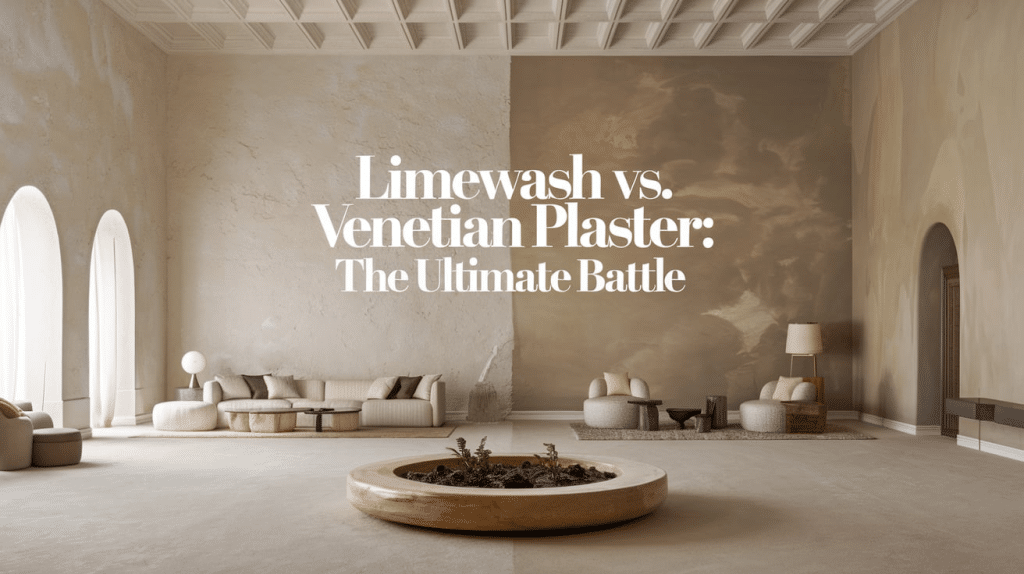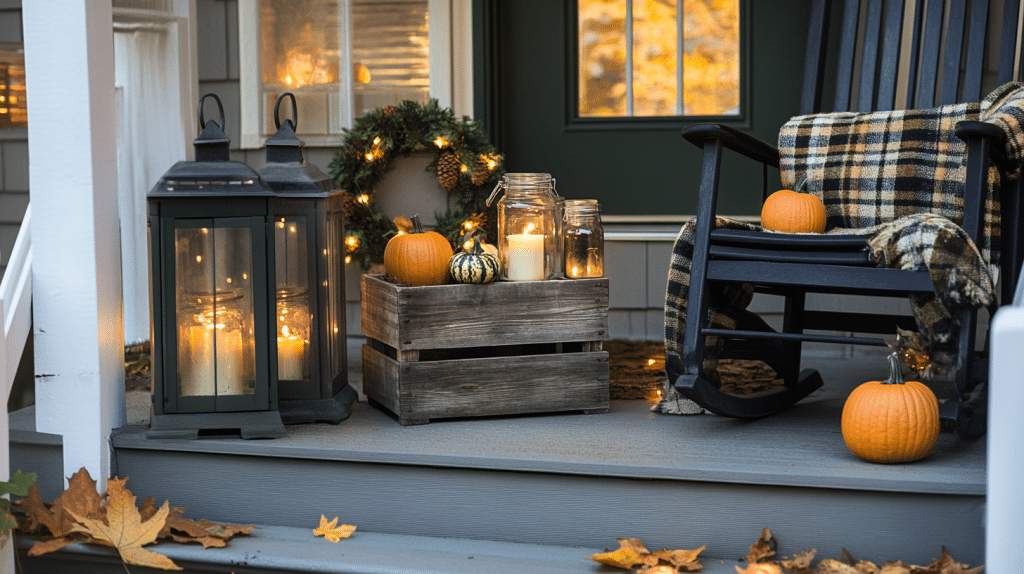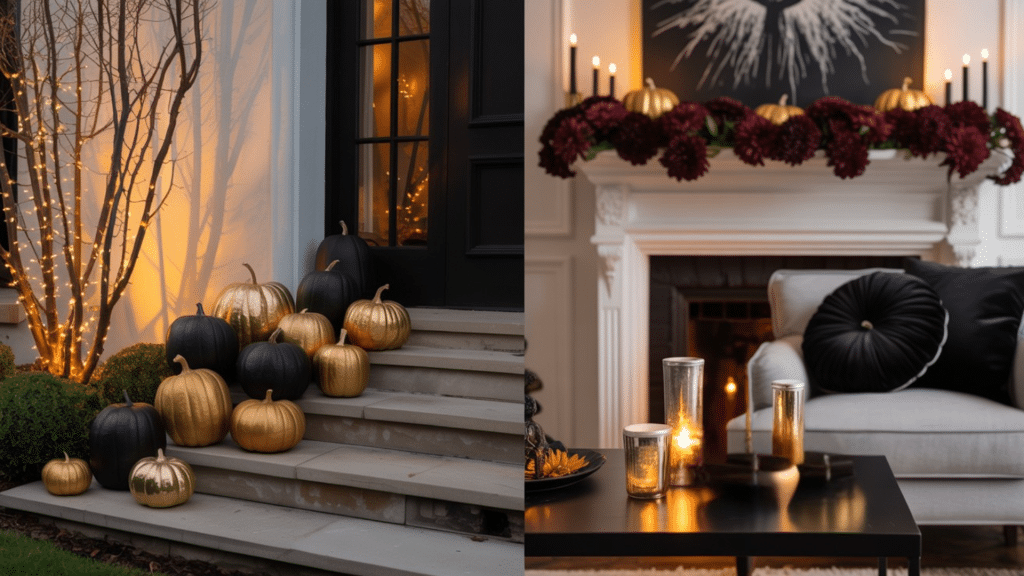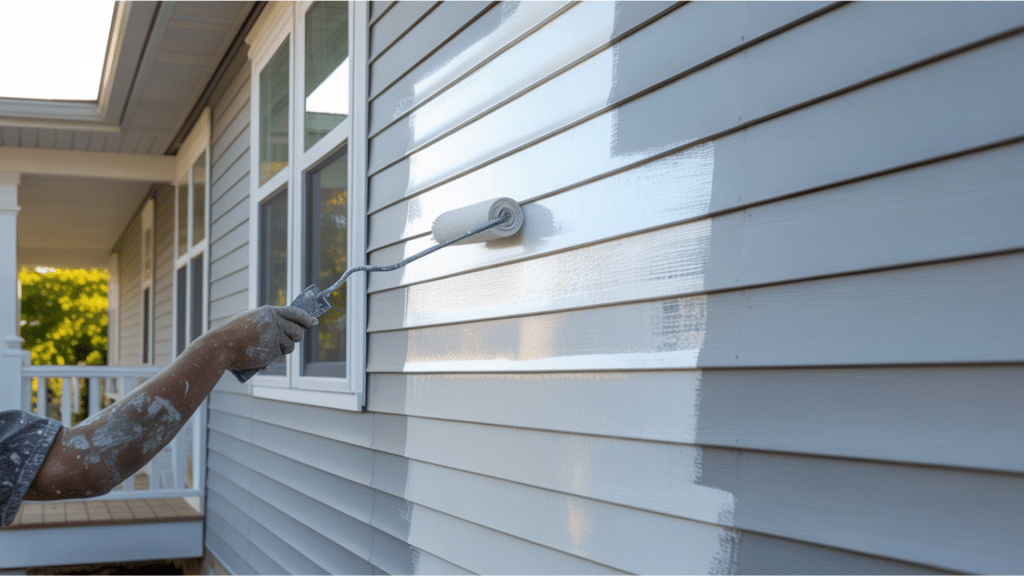Choosing between limewash and Venetian plaster feels like standing in front of two equally gorgeous walls, unsure which one speaks more to your style.
Both finishes promise grace, depth, and timeless charm—but they’re totally different beasts underneath the surface.
In this post, you’ll get a no-fluff comparison that clears the fog. We’ll break down their textures, durability, cost, vibe, and where each one truly shines (or doesn’t).
By the end, you’ll know exactly which wall treatment best suits your space and lifestyle. Let’s settle this battle once and for all.
Limewash vs Venetian Plaster: Setting Them Apart
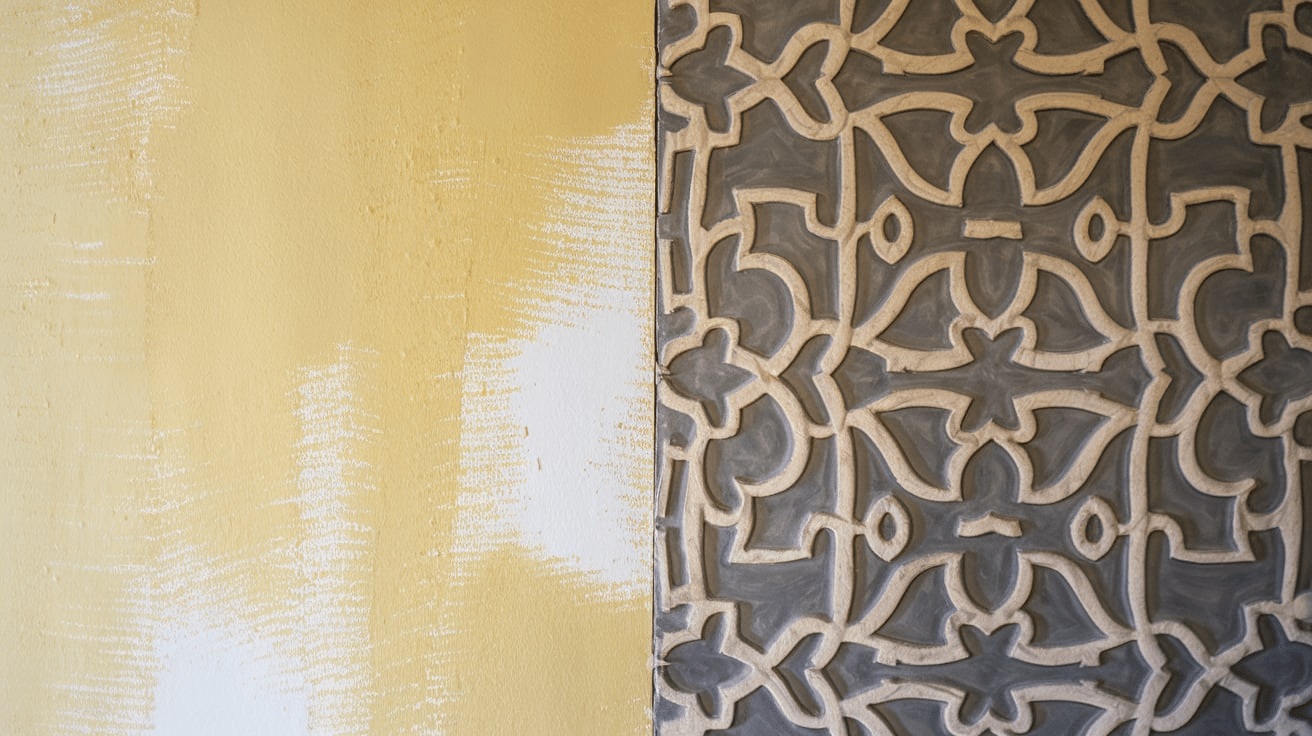
Limewash and Venetian plaster are two distinctive decorative wall finishes. Despite their shared heritage as lime-based materials, each offers unique aesthetics and properties.
| Feature | Limewash | Venetian Plaster |
|---|---|---|
| Finish Appearance | Chalky matte with soft, earthy tones | Smooth with a polished, marble-like sheen |
| Material Composition | Lime, water, and natural pigments | Lime putty mixed with marble dust |
| Surface Texture | Porous and breathable | Dense and sleek with subtle depth |
| Durability | Moderate, may wear over time | Highly durable, can last for decades |
| Moisture Resistance | Breathable but not water-resistant | Water-resistant when sealed properly |
| Ease of Application | Easier to apply, DIY friendly | Requires skilled application, multi-layered |
| Maintenance Needs | May require periodic touch-ups | Low maintenance once sealed |
| Cost Range | Generally affordable | More expensive due to labor and materials |
| Best For | Rustic, vintage, and organic aesthetics | Refined, classic, and luxurious spaces |
| Environmental Impact | Eco-friendly and non-toxic | Also eco-friendly but more resource-heavy |
Limewash, derived from crushed and burned limestone mixed with water, delivers a soft, matte finish with subtle dimension that shifts with changing light. Its breathability makes it particularly suitable for historic buildings that need to release moisture.
By contrast, Venetian plaster emerged from Renaissance Italy. It combined marble dust and lime putty to create a smooth, polished surface that resembled marble.
Choose limewash for soft, time-worn charm or Venetian plaster for polished grace – both bring distinctive character to interior spaces.
The Look and Feel of Limewash vs Venetian Plaster
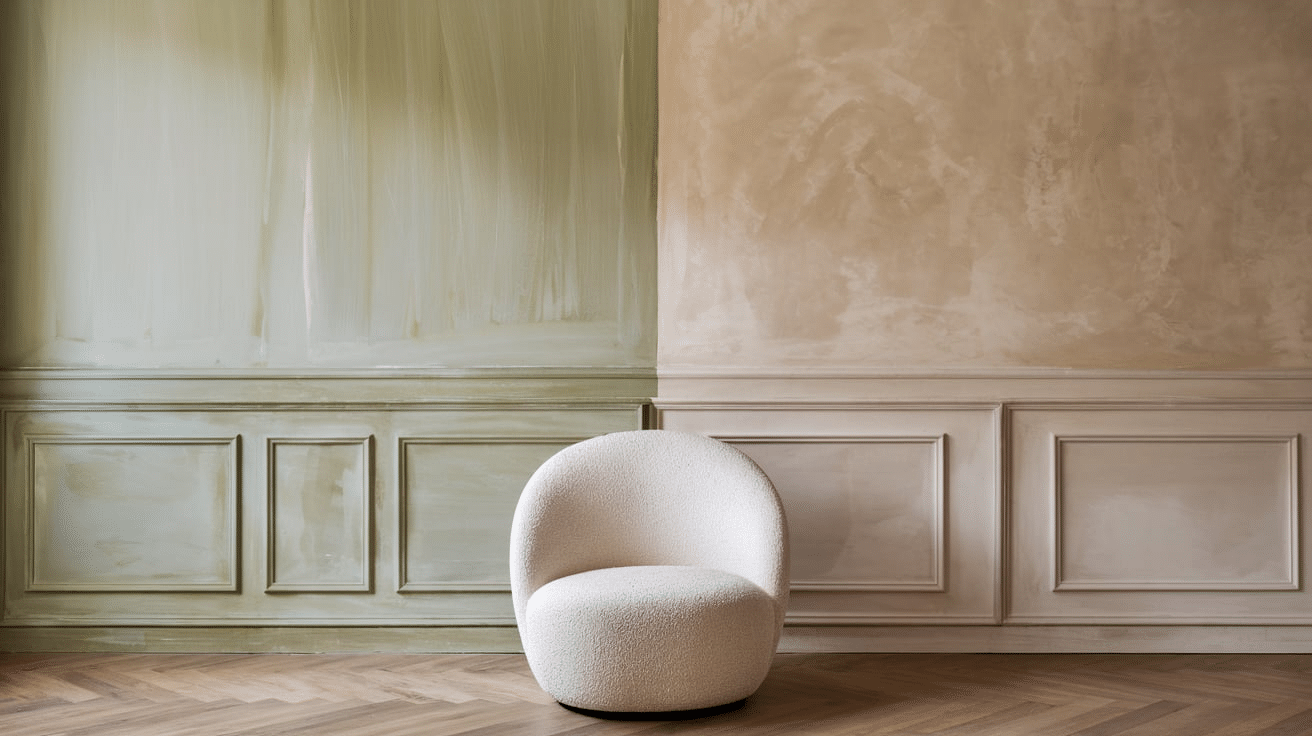
Texture Differences You Can See and Touch
Limewash delivers a distinctly organic texture that feels alive under your fingertips. This centuries-old finish creates subtle depth through its naturally varied application, leaving behind a surface that’s slightly powdery and soft to the touch.
The microscopic limestone particles create tiny peaks and valleys across the wall, forming a surface that tells a story of artisanal craftsmanship.
Venetian plaster presents a dramatically different tactile experience. Its marble-smooth finish results from multiple applications and careful burnishing, creating a surface that feels cool and almost stone-like. The density of the material creates a solid feeling that conveys luxury and permanence in any space.
Matte vs Sheen: Which Aesthetic Wins
- The choice between matte and sheen depends on the mood you want to create in a space.
- Limewash offers a matte aesthetic with a chalky, light-absorbing finish.
- It brings a casual yet sophisticated vibe.
- Works best in rooms aiming for a relaxed, timeworn grace.
- Venetian plaster, on the other hand, delivers a noticeable sheen.
- The sheen can vary from subtle satin to high gloss, based on the burnishing technique.
- Its reflective surface adds a sense of formality and luxury.
- Ideal for making spaces feel polished, upscale, and intentional.
How Light Interacts with Each Finish
Light transfigures both finishes throughout the day but in vastly different ways. With limewash:
- Morning light highlights its subtle color variations
- Midday sun softens its appearance
- Evening light creates dramatic shadows in its textured surface
Venetian plaster performs its light dance as the day progresses. Its polished surface reflects light rather than absorbing it, creating a luminous effect that can make walls appear to glow from within.
The depth achieved through multiple translucent layers means that light penetrates slightly before reflecting, giving the walls a dimensional quality that flat finishes cannot reach.
The interaction between these finishes and your specific lighting conditions might ultimately determine which material best suits your space.
Cost Breakdown: Limewash vs Venetian Plaster
Understanding the financial implications of choosing between limewash and Venetian plaster can help homeowners make smarter style choices without blowing their budget.
While both finishes raise up a space, their cost structures are very different.
Limewash is the more budget-friendly option, especially if you’re after that textured, lived-in vibe.
Original lime-based products typically cost between $40 and $80 per gallon, with one gallon covering around 150 to 200 square feet. For a standard 12′ x 12′ room with 8-foot ceilings, you’ll likely need two coats, bringing material costs to about $160 to $320.
That price point makes limewash an appealing choice for anyone looking to add depth and character on a budget.
Tip: Limewash is DIY-friendly. Practice on a sample board to build confidence before applying it to your walls.
Venetian plaster, on the other hand, is the luxe contender.
Material costs start around $150 per gallon and can exceed $300 depending on quality. Coverage is less – about 100 to 150 square feet per gallon – and three coats are typically required for that polished, marble-like finish.
Expect to spend between $600 and $1,800 on materials alone for a similar-sized room.
Tip: On a budget? Use Venetian plaster on just one accent wall for maximum impact without the full cost.
Best Rooms for Limewash vs Venetian Plaster Finishes
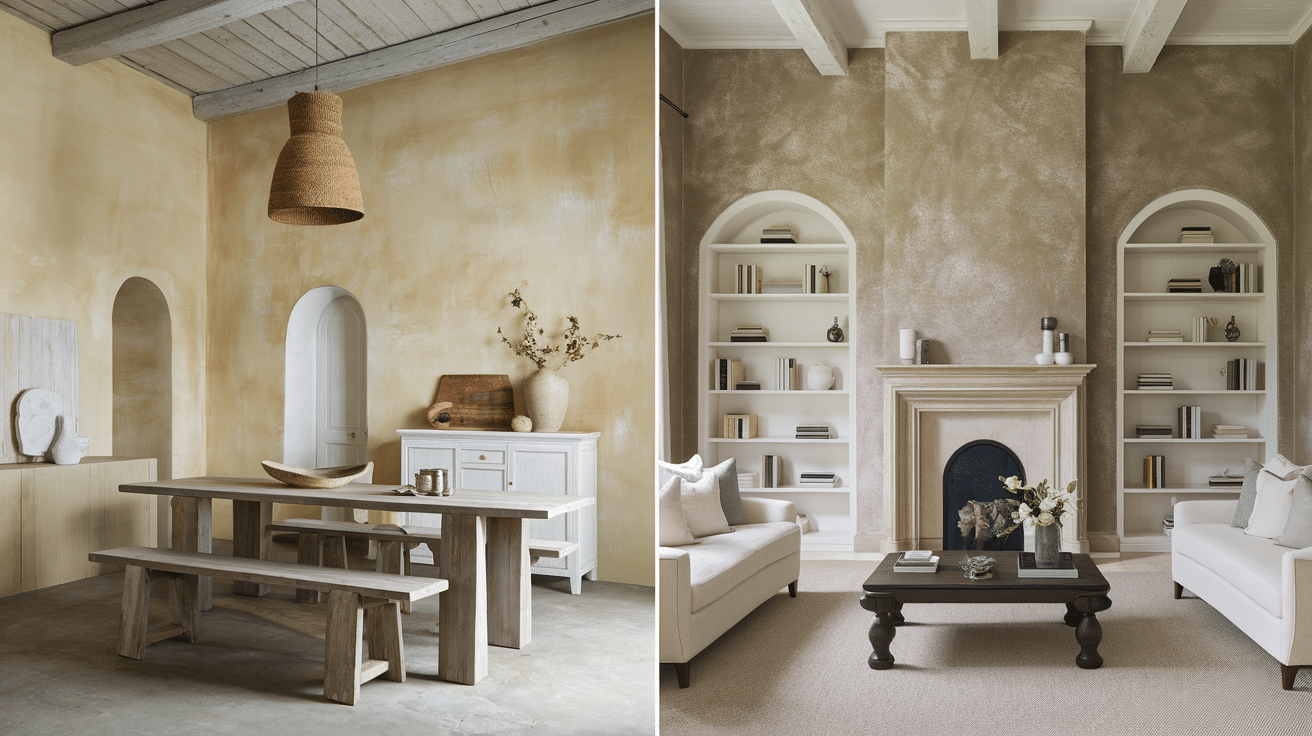
Choosing the right rooms for limewash or Venetian plaster can seriously improve the look and performance of these finishes. Each thrives in different environments, and knowing where they shine helps you get the most out of your walls.
Limewash is perfect for creating warm, relaxed vibes in everyday spaces.
-
Works beautifully in living rooms, where its breathable texture adds softness and helps regulate humidity
-
Turns bedrooms into peaceful sanctuaries thanks to its matte, non-reflective finish that gently diffuses light
-
In dining rooms, limewash responds to natural and artificial light, creating a bright morning feel or a moody dinner setting.
Its ability to subtly shift throughout the day brings a lived-in charm that feels cozy yet refined.
Venetian plaster makes a bold impression and holds up under pressure. It’s ideal for areas that need both luxury and durability.
-
Perfect for entryways, offering a high-end, glossy look that instantly impresses and handles foot traffic
-
Upgrades formal dining rooms, where the sheen reflects lighting to set a special, upscale tone
-
When sealed, it turns primary bathrooms into serene spa-like spaces that manage moisture with ease.
-
In home offices, it bounces light around for a bright, polished backdrop—ideal for long workdays and video calls.
Bonus Tip for Kitchens:
- Use limewash on accent walls away from splashes or heat
-
Apply sealed Venetian plaster on backsplashes or less greasy zones for a luxe touch without the worry
Mixing both finishes throughout your home can strike the perfect balance between casual charm and refined grace.
Pros and Cons: Limewash vs Venetian Plaster
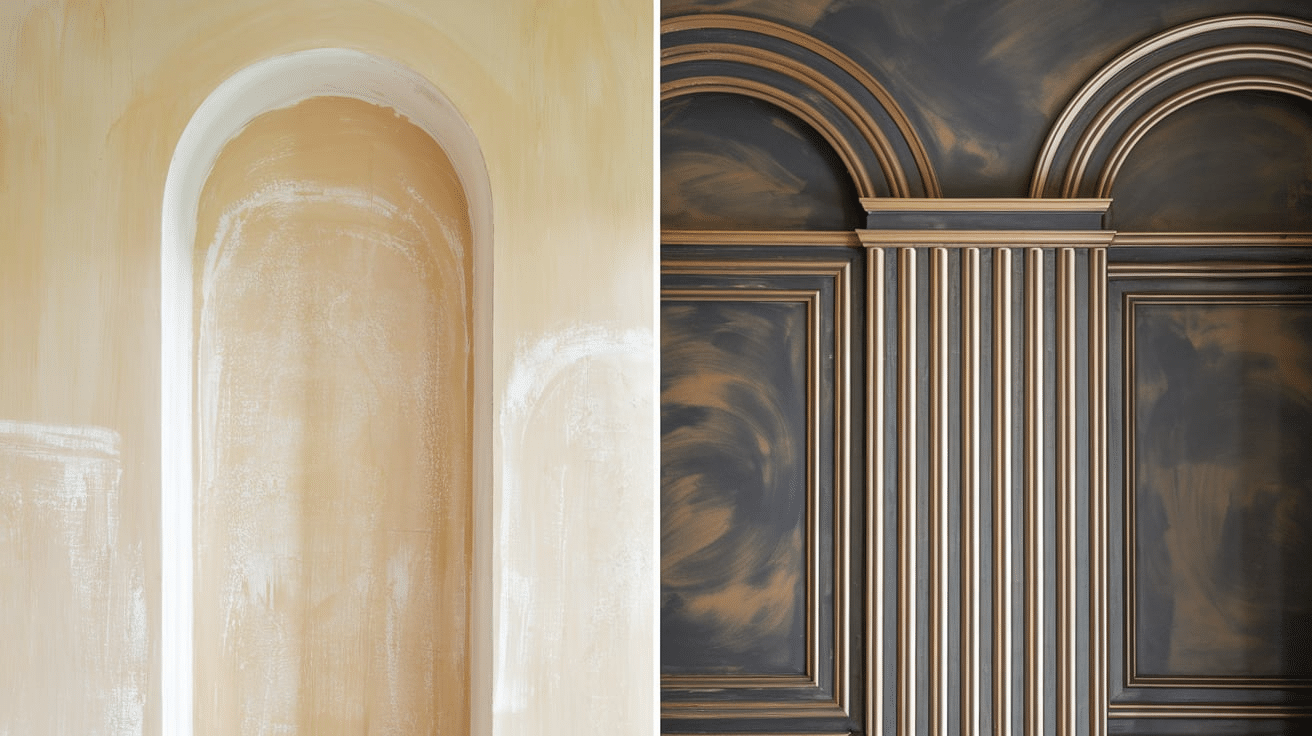
| Category | Limewash | Venetian Plaster |
|---|---|---|
| Pros | – Natural and eco-friendly with a soft, matte finish | – Luxurious, polished look with customizable sheen |
| – Breathable, great for older or porous walls | – Highly durable and long-lasting | |
| – Easy to apply and touch up over time | – Resistant to moisture when properly sealed | |
| – It creates a relaxed, timeworn charm that feels lived-in | – Adds depth and texture for a high-end aesthetic | |
| Cons | – Not water-resistant unless sealed | – Expensive in both materials and labor |
| – Can appear patchy if not applied evenly | – Requires a skilled professional for proper application | |
| – Less durable in high-traffic areas | – Not as breathable once sealed | |
| – Limited in color options compared to other finishes | – Repairs can be tricky and more noticeable |
Final Verdict
When it comes to Limewash vs. Venetian Plaster, the right choice depends on your style, budget, and willingness to work.
If you love that soft, earthy, lived-in charm and want something natural, breathable, and relatively simple to apply, limewash is your go-to. It’s budget-friendly and perfect for cozy, relaxed spaces.
But if you’re aiming for grace with a bit of shine – something that screams craftsmanship and durability. Venetian plaster wins, hands down. It’s a bigger investment, but the payoff is a luxurious finish that lasts for years.
Bottom line? Both have their strengths. Choose the one that matches the mood of your home and the maintenance level you’re comfortable with.
Either way, you’re in for a stunning wall finish.


